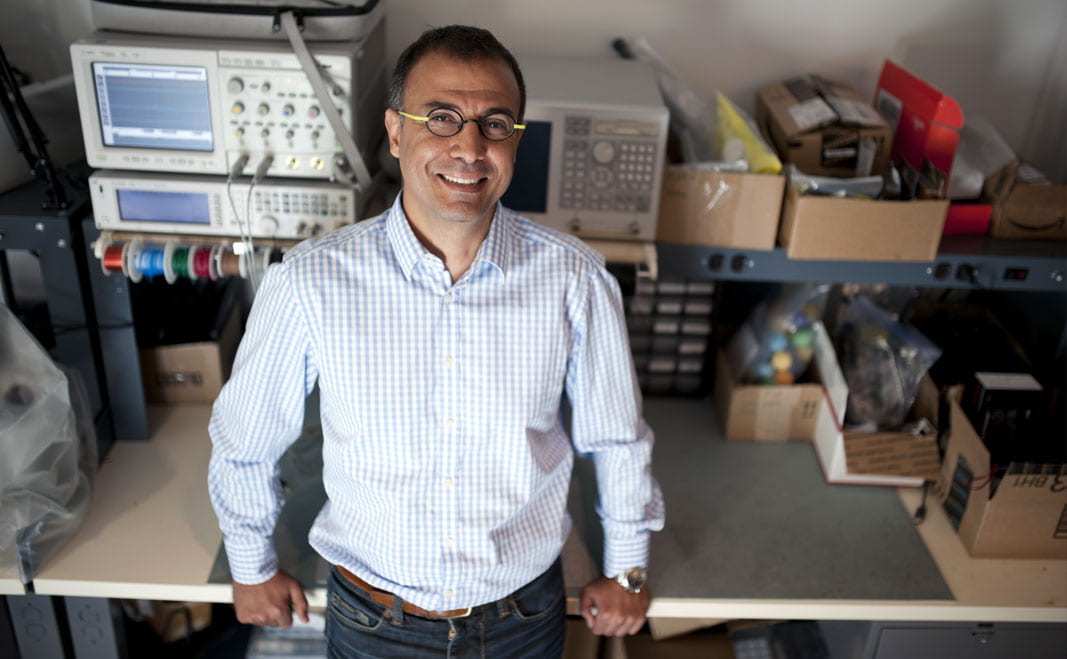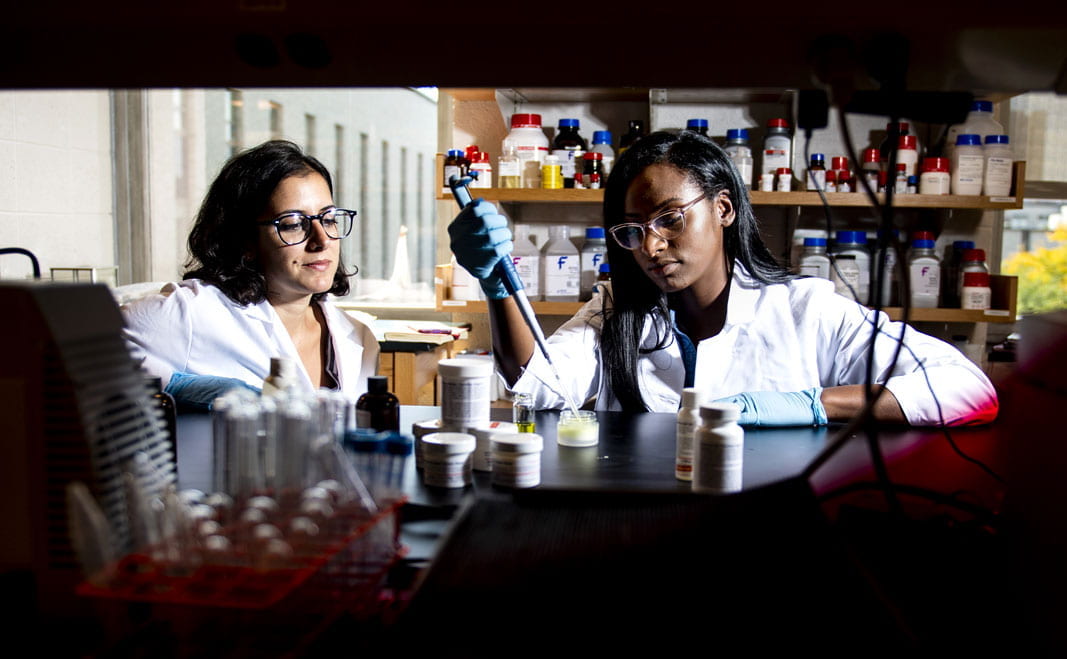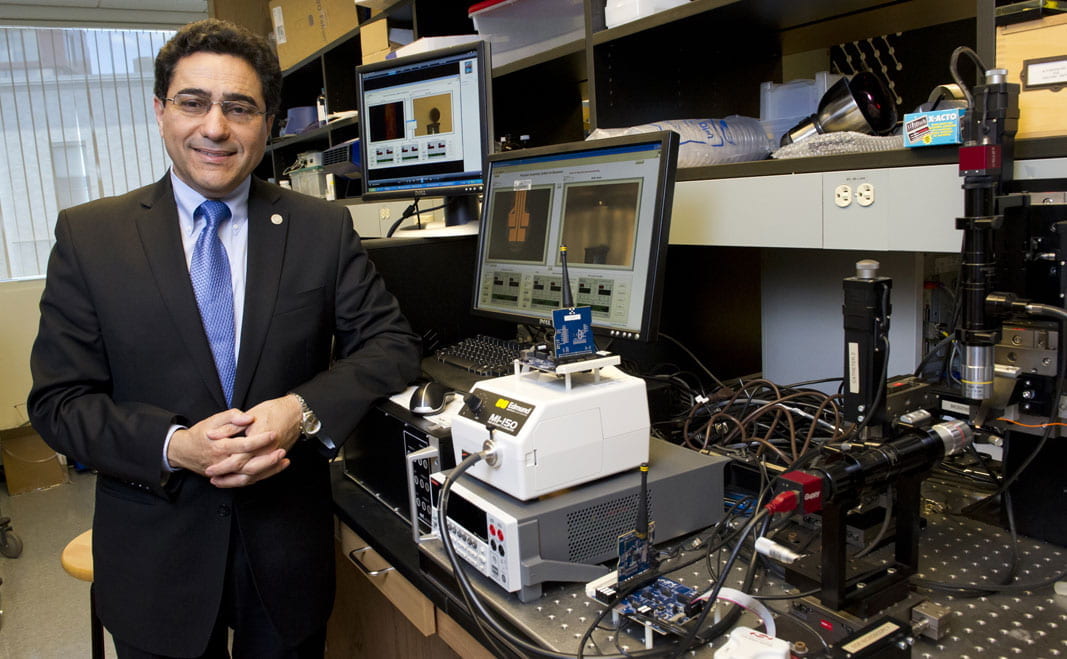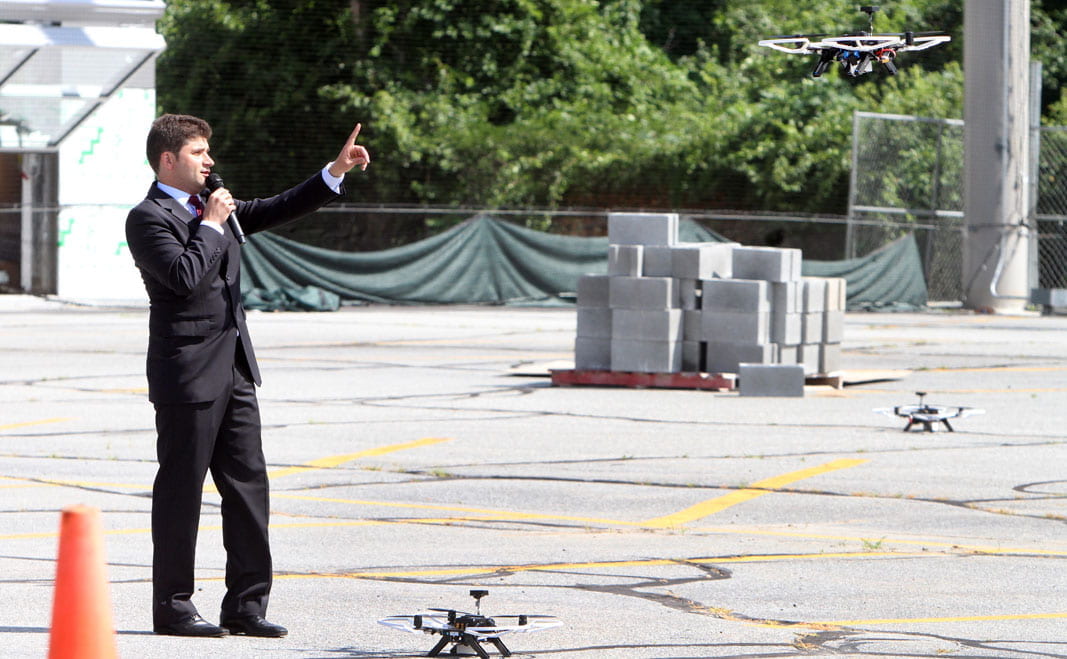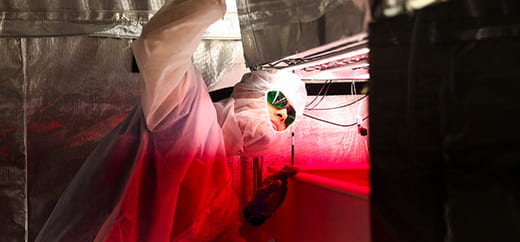Research & Partnership Spotlights
Outsmarting hackers to keep transit systems safe
Wireless communications and tracking and navigation systems are revolutionizing transportation and the global economy.
Today, Lyft and Uber assign drivers to take passengers to and fro. Companies track cargo minute-by-minute. Police use ankle bracelets to monitor parolees. And airline pilots touch down safely, guided by radio signals and landing instrumentation.
But with a few hundred dollars’ worth of equipment, hackers can spoof these systems. According to Northeastern’s cybersecurity researchers, it’s possible for ne’er-do-wells to change the course of a ship, force a drone to land in hostile territory, fake the location of a delivery truck—even cause a plane to crash.
It’s possible for ne’er-do-wells to change the course of a ship, force a drone to land in hostile territory, fake the location of a delivery truck—even cause a plane to crash.
Professor Guevara Noubir and colleagues pinpoint vulnerable points in these systems, then devise fixes. Recently Noubir, his former PhD student and postdoctoral researcher, Sashank Narain, and Assistant Professor Aanjhan Ranganathan took a hard look at commercial “inertial navigation-aided” road navigation systems, which claim to make satellite-guided GPS secure by coupling it with compasses, accelerometers, and gyroscopes.
Adopting the role of adversary, the researchers developed algorithms to allow them to drive a car off course without detection by INS/GPS monitoring. (Imagine hijacking an armored car full of gold not to a bank, but to your own secret hideout.) Equipped with Boston’s street grid, an adaptive GPS spoofer, and a matching algorithmic “path generator,” the researchers broadcast fake GPS signals while pursuing an alternate trajectory. While their route appeared correct to a remote monitor on a screen in real time—the car stopped and turned at expected intersections and intervals—it was, in fact, diverted. Using grids for nine other U.S. cities, the team showed a vehicle could be driven several miles off course without detection.
Closing INS/GPS security gaps will be challenging, says Noubir, a professor at the Khoury College of Computer Sciences. His team is devising strategies to thwart interlopers, including identifying travel routes that would be harder to spoof.
Spinning squid pigments into color-changing materials
The seafaring cephalopods—octopuses, squid, cuttlefish—are masters of camouflage: In seconds, they change color to match their surroundings.
While no scientist has yet managed to replicate this skill, researchers led by Leila Deravi, an assistant professor of chemistry and chemical biology at Northeastern, have made fibers from the pigments in squid skin—and are exploring exciting uses for the material.
Researchers led by Deravi have made fibers from the pigments in squid skin—and are exploring exciting uses for the material.
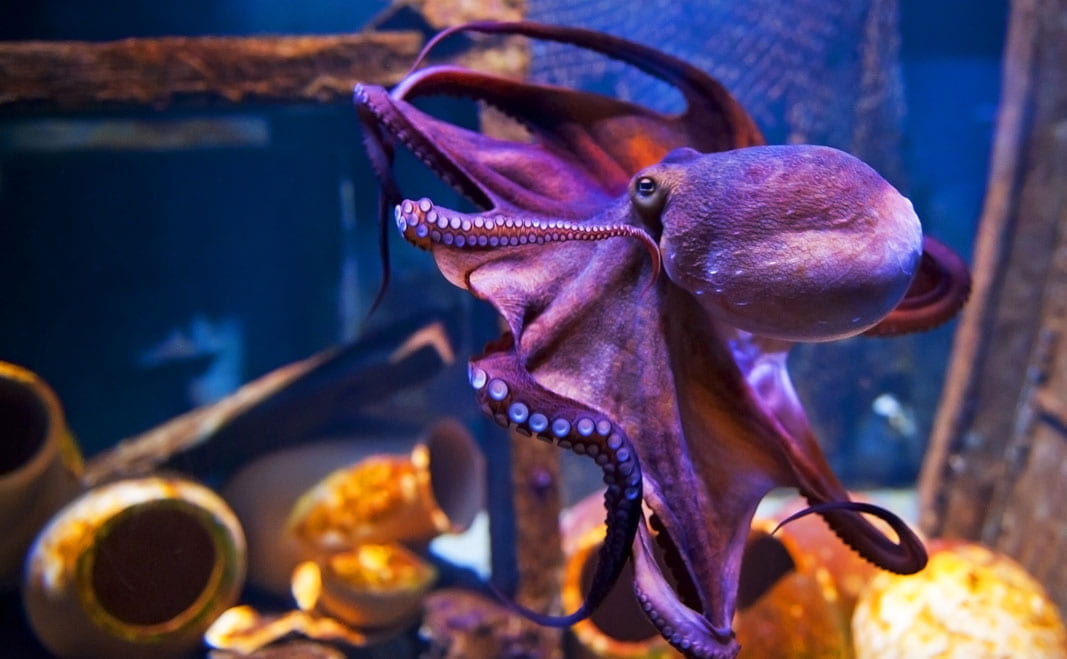
One exciting application, Deravi says, would be wearable displays and fabrics capable of adaptive coloration. The pigments, which take the form of tiny particles, could also be applied to solar cells to increase their ability to absorb sunlight, she says.
Deravi’s lab is looking closely at organs in skin called chromatophores, which in squid appear as thousands of minute pigmented freckles in red, yellow, and brown. Chromatophores are dynamic optical shutters; by opening and closing rapidly, they transform the squid’s color. Deravi’s team extracted pigment granules from these organs to explore their optical qualities—and created thin films and fibers that could be woven into textiles, flexible digital displays, and color-changing devices.
Collaborating with the U.S. Army Combat Capabilities Development Command Soldier Center, Deravi’s lab found that the pigments scatter both visible and infrared light. After engineering a way to mimic chromophores’s structure and mirror-like cell layer, the researchers showed that light scattered off and through the granules, enhancing their color range.
NanoOPS: A revolution in nanomanufacturing, ignited by partnerships
Advanced electronics are transforming every aspect of life, from healthcare and energy to transportation, but manufacturing them involves vacuum-based processes that are costly, requiring massive quantities of water and power.
That’s why Northeastern professor Ahmed Busnaina created NanoOPS, a 3D printing platform that creates electronic components at one-tenth to one-hundredth of the expense and 1,000 times faster and smaller compared to other 3D additive printing systems.
In development are wearable biosensors that detect lactate and glucose in sweat—red flags for stress that will prove useful in monitoring the health and performance of patients, athletes, and soldiers.
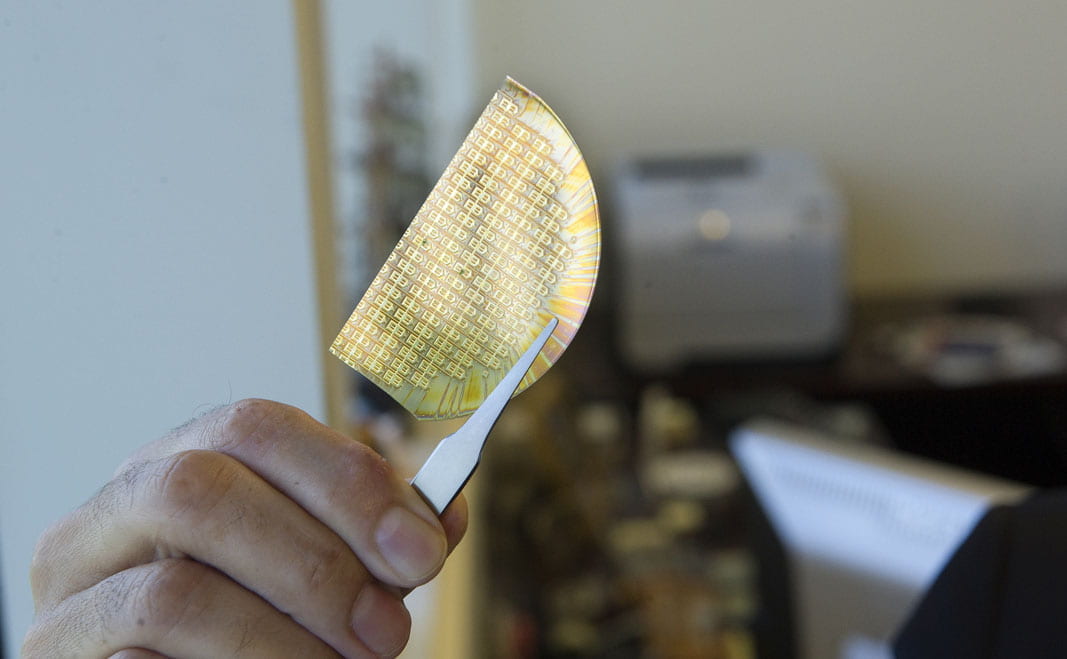
NanoOPS—short for Nanoscale Offset Printing System—was born of partnerships with government and industry. The system was developed over 10 years with the expertise of 130 researchers at Northeastern’s Center for High-rate Nanomanufacturing, led by Busnaina and funded with $80 million from the National Science Foundation, the Department of Defense, NASA, Raytheon, General Electric, and more than 30 other corporations.
Busnaina, a University Distinguished Professor and William Lincoln Smith Professor of Mechanical and Industrial Engineering, is currently working with companies to print nano-size LEDs, flexible electronics, nano-electro-mechanical systems, chemical and biosensors, and touch and quantum-dot displays. In development are wearable biosensors that detect lactate and glucose in sweat—red flags for stress that will prove useful in monitoring the health and performance of patients, athletes, and soldiers.
NanoOPs is now a full-fledged company, with Busnaina its CTO. The company has licensed exclusive rights to more than 35 patents, he says, adding, “We welcome additional partners.”
Drone swarms that make decisions on the fly
Imagine hundreds of drones homing in on a target like a swarm of bees, independent of any human controller, swooping in to deliver vital medicines or search for survivors in the wake of a disaster.
The drones’ herd-like, autonomous behavior is possible thanks to work by Associate Professor Jose Lorenzo Martinez and colleagues. Powered by batteries carried on each drone, guided by millimeter wave radar and 2D, 3D, and 4D optical cameras, and enabled by machine-learning algorithms and artificial intelligence, the teams’ drone swarms can detect, classify, and pursue a target, wirelessly coordinating their flight paths.
The Martinez lab’s drone swarms can detect, classify, and pursue a target, wirelessly coordinating their flight paths.
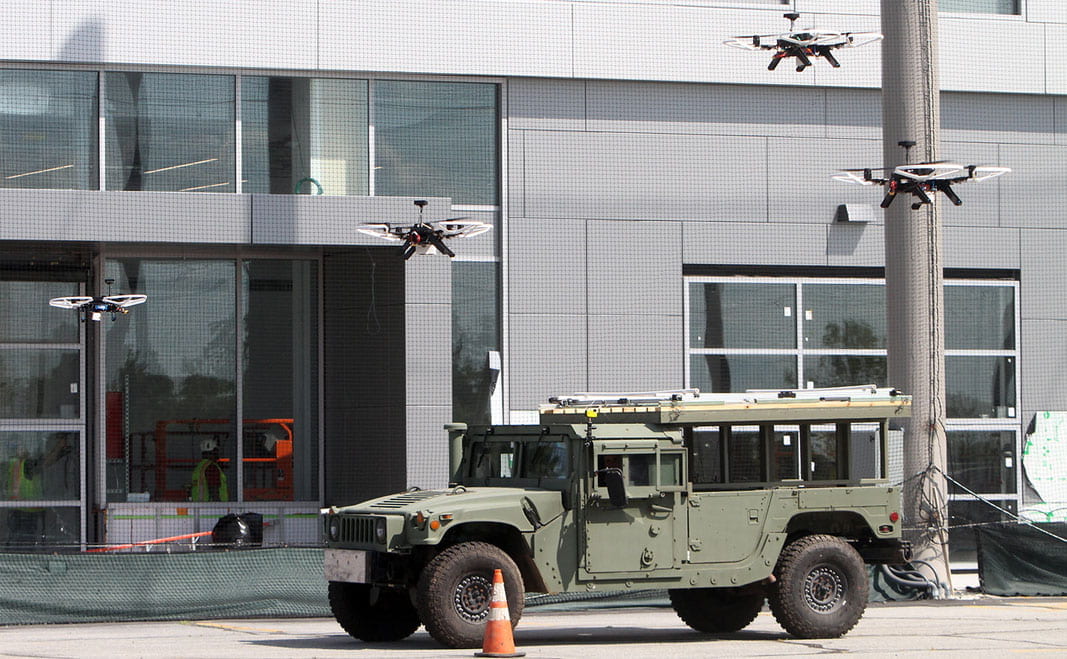
If one or more drones sees that a person or object is trying to approach it, the drone will escape, Martinez says. “If some drones are taken out, the others will keep going.”
In what he calls “multi-swarming,” subgroups of drones share information that is highly compressed. Because the swarms transmit fewer bits of data, they use less energy, which allows each drone to communicate with the others with minimal battery power.
Subswarm 1 detects an individual entering a truck, then instructs a second swarm to follow the vehicle, Martinez explains. Subswarm 2 then commands a third to track the person as he exits the truck, and so on. “This is a very complex problem,” he says, “because you are doing sensing and imaging at high speed directly on the drone.”
Typically, drone systems collect data, send it to a station for processing, and then relay it back to each drone. But swarms from the Martinez lab couple real-time sensing with real-time decision-making and the actuation of flight controllers on each drone.
Keeping drone swarms aloft is a dynamic operation, Martinez says. For a swarm to fly longer than 30 minutes, its drones must recharge at a recharging station or potentially through the air. “You can coordinate subswarms,” he says, “so that if 10 are active, another 15 are recharging.”
Learn more about us
Overview
Northeastern’s Innovation Campus accelerates technology and innovation through a uniquely powerful, customizable partnership model.
Leadership and faculty
Experts from industry, government, and academia join with faculty and students to translate discoveries into revolutionary technologies, materials, and systems.
Our facilities
At this 14-acre hub of research breakthroughs and entrepreneurship, companies, startups, federal agencies, and universities convene.
